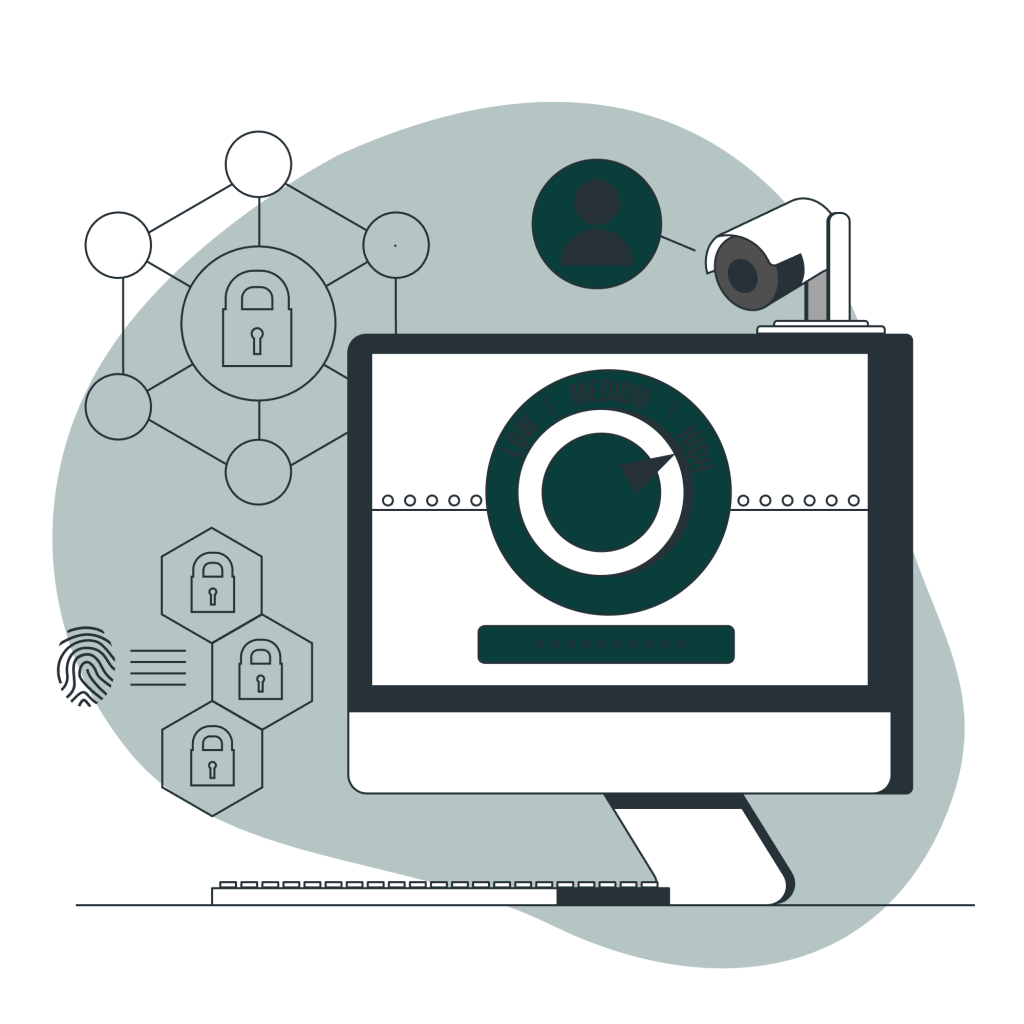There are an estimated 8,000 cyberattacks annually. With 10 million customer accounts exposed from JD Sports’ eCommerce site alone, protecting customer data from cybercriminals has become a critical aspect of online business, particularly in the eCommerce sector.
Trust is a vital currency in the online marketplace, with eCommerce sites storing vast amounts of personal and financial customer data. If there's a breach of this trust through a cyberattack where data is stolen or compromised, it severely damages a company's reputation. Customers hesitate to use the platform, leading to lost sales and potentially even legal action.
Maintaining robust data protection can also offer a compelling competitive advantage. In an increasingly privacy-conscious market, customers are likely to choose and remain loyal to companies they perceive as trustworthy and secure. A company with a robust cybersecurity posture can leverage this to differentiate itself from competitors.
1. Conduct a security audit
Conducting a thorough security audit is a crucial first step, and they assess the vulnerability of your eCommerce platform, identifying potential weak points that cybercriminals could exploit. An audit prevents costly, damaging data breaches, protects your company's reputation, and secures your customers’ data, thus providing confidence in your platform.
Conducting a security audit typically involves several steps:
- Scope definition: Identify the boundaries of your audit, and decide what falls within the audit’s scope. This could include systems, networks, and procedures
- Risk assessment: Identify potential threats and areas of vulnerability, analysing their impact
- Data collection: Collect information about the systems under review, including system configurations and network diagrams, access controls, and policy documents
- Analysis: Analyse the data to identify vulnerabilities or non-compliance with any relevant regulations
- Reporting: Generate a detailed report outlining the audit’s findings and recommendations for improvement
- Action: Based on the report, appropriate action can be taken to remediate the vulnerabilities
- Review: Review the effectiveness of the actions taken and ensure that they have successfully addressed any areas of vulnerability
- Regular follow-ups: This should be an ongoing process, with regular follow-up audits to ensure continued security
Professional auditors possess the necessary knowledge and tools to conduct a thorough, accurate audit. They are experienced in identifying and mitigating complex security vulnerabilities that might be overlooked and can provide an independent system assessment.
2. Implement strong access controls
Given the sensitive customer information that ecommerce platforms hold, access to each section of the system must be only by authorised personnel.The concept of least privilege is a key factor in access control and suggests that every system user only has access to areas necessary to perform their tasks. A customer service representative, for example, may need access to a customer's order history but doesn't require any payment information. By adhering to this concept significantly reduces the risk of cyber attacks.

There are several ways to implement robust access controls:
- Strong passwords: Encourage users to create strong, unique passwords
- Multi-factor authentication: Users should provide at least two forms of identification
- User permission management: Each user's permissions should be carefully managed, with regular reviews
3. Secure payment processing
There are substantial risks associated with customer payment processing, and if there were to be a data breach, the consequences could be catastrophic for your business.Therefore, it is crucial for eCommerce platforms to adopt secure payment processing solutions.
Secure Sockets Layer (SSL) certificates and Hypertext Transfer Protocol Secure (HTTPS) encryption are the most widely trusted security protocols. SSLs ensure data transmitted between a web server and a browser remains private, while HTTPS encrypts the data, making it indecipherable. These protocols are depicted in the URL as 'HTTPS' along with a padlock icon, indicating the user’s information is securely transmitted.

Payment gateways process online credit card payments. Reputable gateways have robust security measures in place, including encryption, tokenisation, and fraud prevention capabilities. They provide an additional security layer by removing the necessity for eCommerce platforms to store sensitive payment data.
All UK merchants that process, transmit or store payment card data must comply with the Payment Card Industry Data Security Standard (PCI DSS). These standards ensure that all eCommerce platforms that accept, process, store, or transmit credit card information maintain a secure environment.
4. Use software and plugins to keep updated
Ecommerce businesses employ a variety of security measures to protect their online operations, customer data, and financial transactions. Many use virtual private networks, or VPNs, to encrypt data traffic ensuring secure communication between the business and its customers or within the business network itself.Two-factor authentication (2FA) plays a crucial role in bolstering account security. By requiring a second form of identification, often a one-time code sent to a mobile device or email, 2FA significantly decreases the risk of data breaches.
Implementing strong password policies are another measure many businesses employ. By making them as complex as possible, including multiple random characters and requiring regular password changes, unauthorised access can be prevented.
Keeping your eCommerce platform, content management system (CMS), and plugins current is a fundamental aspect of online security. Updates often include patches for vulnerabilities that cyber-criminals could exploit. Ignoring these updates leaves you at risk and signals to attackers that your system may be an easy target.
Tips for managing your updates include:
- Enabling automatic updates
- Backing up before any updates
- Being aware of any new updates or patches
- Scheduling regular system maintenance
- Creating a staging environment to test updates before they go live

5. Educate and train employees
Employees play a critical role in data security, often acting as the first line of defence against cyberattacks, and comprehensive training in such should be provided. They should be trained to spot any signs of cyberattacks, which include suspicious email addresses, attachments or links, poor grammar, and unsolicited information requests.Phishing attacks often involve deceptive emails or websites tricking users into providing sensitive information; similarly social engineering attacks manipulate individuals into performing actions or revealing confidential data, and employees need to recognise these.
Employees should also understand the importance of keeping their passwords unique, be aware of the risks of sharing and the necessity to change passwords regularly.
Effective security training programmes often include a combination of the following:
- Formal training sessions
- Practical exercises
- Regular updates on current threats or security policies
- Tests and quizzes
- Providing resources
6. Regularly backup and monitor data
Regular data backups play an essential role in the overall security of an ecommerce platform. By backing up your data and storing it away from your live streams, you’ll minimise downtime and data loss in the event of a breach.Automated backup solutions offer a convenient way to ensure regular and consistent backups are taken without manual intervention.
Off-site, or cloud, storage is another critical aspect of a robust backup strategy and protects against the risk of physical damage to your primary data centre. During a data breach, it also ensures backups are inaccessible through your primary network.
Monitoring tools play an equally important role in data breach prevention and response by detecting unusual activity patterns that could indicate a data breach, such as repeated login attempts, access from unusual locations, or uncommon data transfers. By providing real-time alerts, monitoring tools allow your security team to respond to suspicious activity immediately.
Conclusion
Safeguarding an eCommerce store from data breaches is a multifaceted process that requires continuous effort and vigilance. New threats and vulnerabilities emerge regularly, and your security measures must evolve accordingly.Conducting a security audit to identify potential vulnerabilities and the necessary actions to rectify them, implementing robust access control limits for those with access to the various sections of your site, and employing secure payment processes are all recommended. It’s also vital to regularly update your software, train employees in security protocols and ensure you backup your data.
It's essential to take immediate action to implement these steps and protect your customers' data. The reputation of your business depends on your ability to provide a secure shopping environment. Investing in data security is not just a requirement but a crucial factor in the long-term success of your ecommerce business.




